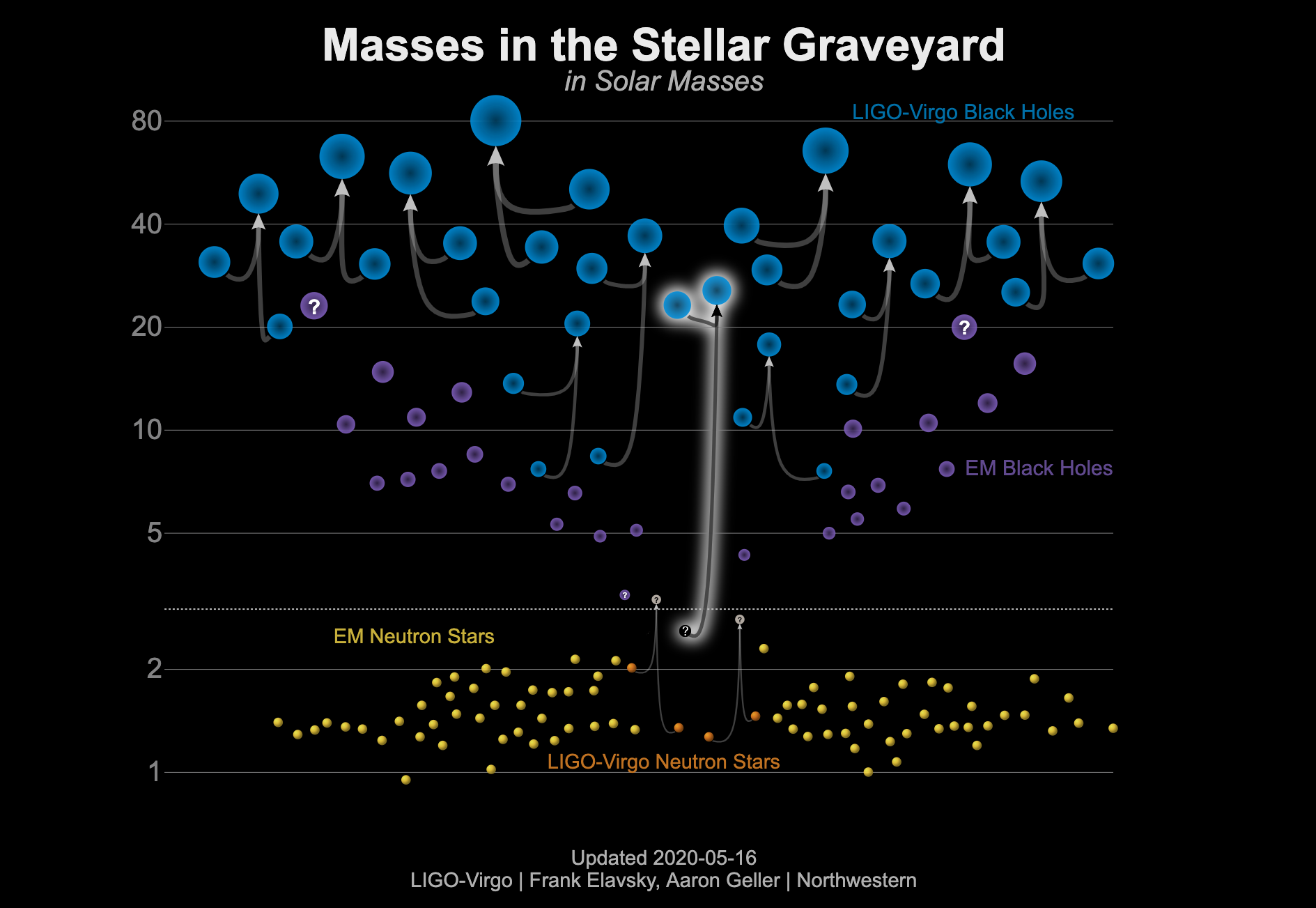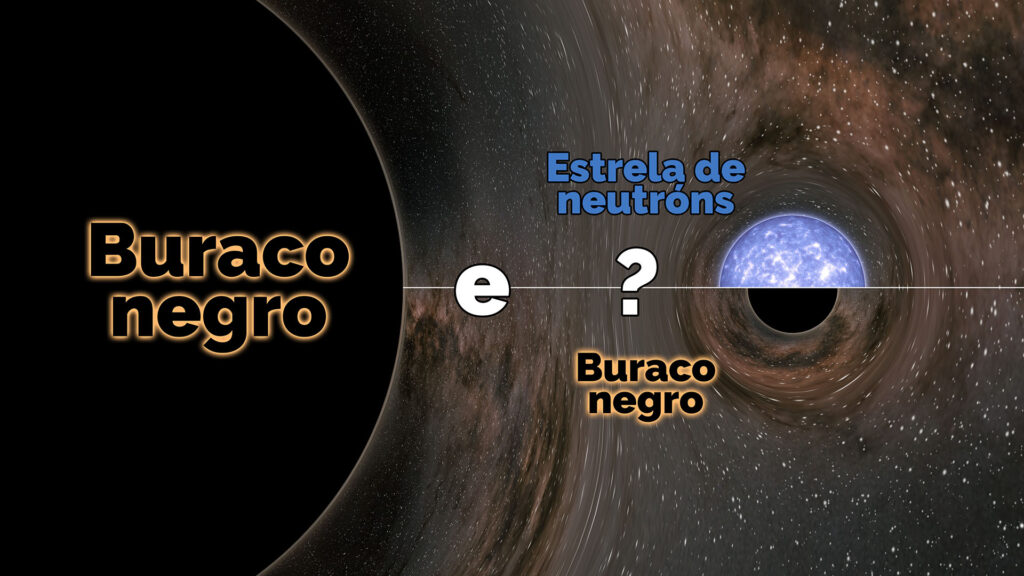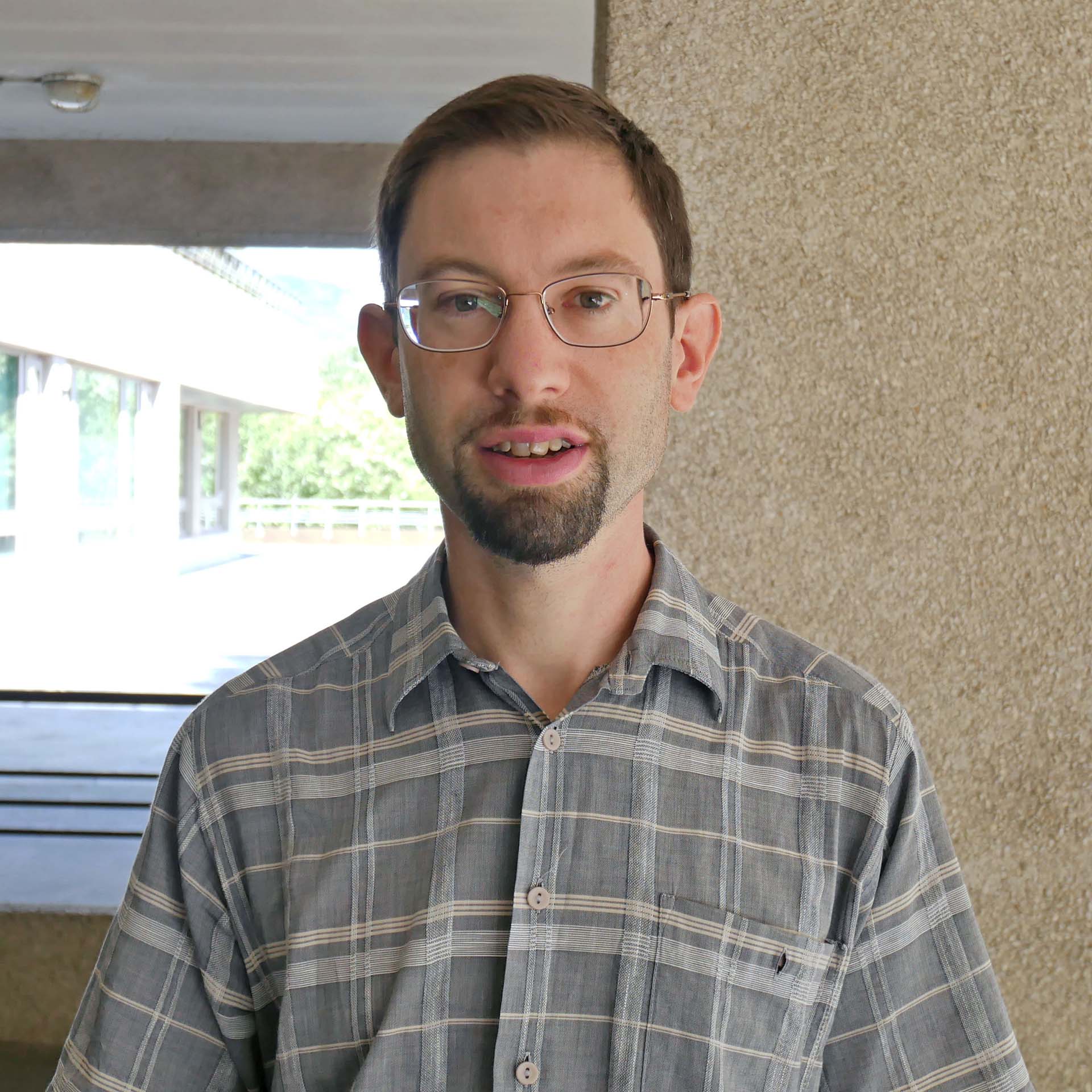Virgo and LIGO, in which IGFAE participates, have announced the discovery of a compact object of about 2.6 solar masses, placing it in a range between the heaviest neutron star and the lightest black hole ever seen. About 800 million years ago, this object merged with a black hole of 23 solar masses and, in so doing, emitted an intense gravitational wave. Since the observation of this wave alone, which was detected on Earth in August 2019, does not allow us to distinguish whether the compact object is a black hole or a neutron star,
its precise nature remains a mystery.
For a long time astronomers have puzzled over the lack of observations of compact objects with masses ranging from 2.5 up to 5 solar masses. This mysterious grey area is known as the ‘mass gap’: a range of masses apparently too light for a black hole and too heavy for a neutron star. Both neutron stars and black holes form when very massive stars run out of their nuclear fuel and explode as supernovae. What is left depends on how much of the star’s core remains. The lighter cores tend to form neutron stars, while the heavier ones collapse into black holes. Understanding whether a mass gap exists in the mentioned range, and why, has been a long-lasting puzzle for scientists.
Now, the scientific collaborations running the Advanced Virgo detector at the European Gravitational Observatory (EGO), near Pisa in Italy, and the two Advanced LIGOs, in the US, have announced the discovery of an object of about 2.6 solar masses, i.e. within the so called ‘mass gap’, thus questioning its very existence. The nature of the object itself remains mysterious, since the gravitational-wave observations alone do not allow us to distinguish whether it is a black hole or a neutron star. About 800 million years ago, the object merged with a black hole of 23 solar masses and, in so doing, generated a final black hole about 25 times the mass of the sun. The merger emitted an intense gravitational wave, which was detected on the 14th of August, 2019, by the three instruments in the network and is hence called GW190814. The discovery has just been published in The Astrophysical Journal Letters

Caption for mass chart: This graphic shows the masses for black holes detected through electromagnetic observations (purple), the black holes measured by gravitational-wave observations (blue), the neutron stars measured with electromagnetic observations (yellow), and the neutron stars detected through gravitational waves (orange). GW190814 is highlighted in the middle of the graphic as the merger of a black hole and a mystery object around 2.6 times the mass of the sun. Image credit: LIGO-Virgo/ Frank Elavsky & Aaron Geller (Northwestern).
Another peculiarity of this event is that the merger shows the most unusual ratio between the masses of a binary system that has been recorded to date. The larger mass is around 9 times heavier than the smaller mass.
The signal associated with such an unusual merger was clearly detected by all three of the instrumentsn of the LIGO-Virgo network, with an overall signal-to-noise ratio as high as 25. Thanks mainly to the delay between the signal arrival times at the well-separated detectors, i.e. the two Advanced LIGOs in the US and Advanced Virgo in Italy, the 3-detector network was able to localise the origin of the wave to within about 19 square degrees.
When the LIGO and Virgo scientists spotted this merger, they immediately sent out an alert to the astronomical community. Many ground- and space-based telescopes followed up in search of light and other electromagnetic waves, but, unlike with the famous merger of two neutron stars, detected in August 2017 and which gave birth to so-called multi-messenger astronomy, none picked up any signals.
According to the Virgo and LIGO scientists, the August 2019 event was not seen in light for a few possible reasons. First, this event was six times further away than GW170817, making it harder to pick up any light signals. Second, if the collision involved two black holes, it likely would not have emitted any light. Third, if the smaller object in the system was in fact a neutron star, its 9-fold more massive black-hole partner might have swallowed it whole; a neutron star consumed whole by a black hole would not give off any light
Thomas Dent, coordinator of the gravitational wave program at IGFAE says: “GW190814 again shows the potential of the global network of detectors to spot these mysterious cosmic events in space with greater precision, in order to search for any emission of light or other particles. “We are continually improving methods for detecting and tracking gravitational wave sources as the network expands.”
In addition to testing our understanding of stellar evolution and the production of neutron stars and black holes in the mass gap, the peculiar ratio between the masses of the binary system and the fact that it is the best-located gravitational wave event in the sky to date, without an electromagnetic counterpart, has made it possible to carry out new tests of the theory of gravity and a new measure of the Hubble constant, compatible with that obtained by the event GW170817.
Future observations with Virgo, LIGO, and possibly other telescopes, will be able to detect similar events and help us answer the many questions that the detection of GW190814 has raised, whose identity remains a mystery.
Gravitational wave search with a software
The IGFAE gravitational wave research program, a joint center of the University of Santiago de Compostela (USC) and the Xunta de Galicia, is the most recent member to join the LIGO Collaboration in Spain. The program was created in November 2018 when of Thomas Dent joined IGFAE. The group has extensive experience in analytical methods to detect gravitational wave signals from the fusion of binary black hole systems and neutron stars, such as the 14 events cataloged so far by the LIGO-Virgo collaboration. IGFAE is now working on updating the detection channels for this type of event using PyCBC software, with the aim of maximizing the scope of binary searches in the most recent data collection, called O3, as well as in future data collection. The group is also involved in deducing information regarding populations of gravitational wave sources, including indications that dozens of new probable black hole binary detections will provide about the formation and evolution of these binary systems.
Members of the IGFAE group work at the Pierre Auger Cosmic Ray Observatory, in Malargüe, Mendoza (Argentina), being responsible for the search for extremely high energy neutrinos in temporal and spatial coincidence with the event GW190814, as well as with all events announced during O3 data collection. They have also been co-authors with the LIGO and Virgo collaborations of works in which the most restrictive limits to the emission of ultra-high energy neutrinos have been established from the fusion of the binary system of neutron stars GW170817. This group will continue to carry out multi-messenger follow-ups in future data collection.
Spanish participation in gravitational wave astronomy
Five groups in Spain are contributing to LIGO-Virgo gravitational wave astronomy, in areas ranging from theoretical modeling of astrophysical sources to improving detector sensitivity for current and future observation periods. In addition to IGFAE, a group at the Universitat de les Illes Balears (UIB) is part of the LIGO Scientific Collaboration, while the University of Valencia (UV), the Institute of Cosmos Sciences at the University of Barcelona (ICCUB) and the IFAE of Barcelona are members of Virgo.
Additional information about the gravitational-wave observatories:
The Virgo Collaboration is currently composed of approximately 550 members from 106 institutes in 12 different countries, including Belgium, France, Germany, Hungary, Ireland, Italy, the Netherlands, Poland, Portugal and Spain. The European Gravitational Observatory (EGO) hosts the Virgo detector near Pisa in Italy, and is funded by Centre National de la Recherche Scientifique (CNRS) in France, the Istituto Nazionale di Fisica Nucleare (INFN) in Italy, and Nikhef in the Netherlands. A list of the Virgo Collaboration groups can be found at http://public.virgo-gw.eu/the-virgo-collaboration/. More information is available on the Virgo website at http://www.virgo-gw.eu. LIGO is funded by the NSF and operated by Caltech and MIT, which conceived of LIGO and lead the project. Financial support for the Advanced LIGO project was led by the NSF, with Germany.
(Max Planck Society), the U.K. (Science and Technology Facilities Council) and Australia (Australian Research Council-OzGrav) making significant commitments and contributions to the project. Approximately 1,300 scientists from around the world participate in the effort through the LIGO Scientific Collaboration, which includes the GEO Collaboration. A list of additional partners is available at https://my.ligo.org/census.php.
La contribución española está financiada por la Agencia Estatal de Investigación, Ministerio de Ciencia, Innovación y Universidades, a través de los programas AYA y FPN, programas de Excelencia Severo Ochoa y María de Maeztu, programas de financiación de la Unión Europea, Fondos FEDER, fondo social Europeo, Vicepresidència i Conselleria d’Innovació, Recerca i Turisme, Conselleria d’Educació, i Universitats del Govern de les Illes Balears, Conselleria d’Innovació, Universitats, Ciència i Societat Digital de la Generalitat Valenciana, programa CERCA de la Generalitat de Catalunya, y tienen el apoyo de la Red Española de Supercomputación (RES).
Caption for beauty shot: In August of 2019, the LIGO-Virgo gravitational-wave network witnessed the merger of a black hole with 23 times the mass of our sun and a mystery object 2.6 times the mass of the sun. Scientists do not know if the mystery object was a neutron star or black hole, but either way it set a record as being either the heaviest known neutron star or the lightest known black hole. Image credit: LIGO/Caltech/MIT/R. Hurt (IPAC).
Artistic rendering of the GW190814 event, in which a smaller compact object is swallowed by a 9-times-more-massive black-hole. The matter stream between the two objects and the look of the massive black hole are an artistic invention. To the best of our knowledge, the GW190814 fusion is not thought to have emitted any light. Credit: Alex Andrix

